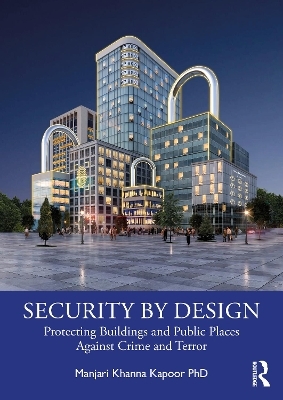
Security by Design
Protecting Buildings and Public Places Against Crime and Terror
Seiten
2023
Routledge (Verlag)
978-1-032-46330-8 (ISBN)
Routledge (Verlag)
978-1-032-46330-8 (ISBN)
This is a book about the intersection of architecture and security, about effective crime prevention and counter terror using the built form.
This is a book about the intersection of architecture and security, about effective crime prevention and counterterror using the built form. While security professionals continue their strive towards alleviating our fear of crimes, and whilst methodologies like CPTED (Crime Prevention Through Environmental Design) have demonstrated the impact of design on prevention of crime over the last five decades, too many built environment professionals are not aware of these strategies.
This book starts with the premise that there is a huge role for the design fraternity (namely architects and planners) in achieving realistic, efficient and permanent results, and ultimately in creating a safer world. It seeks to present such strategies in a palatable way and encourage professionals to incorporate security thinking into their design process as second nature.
Combining international case studies including One World Trade Centre, New York; WHO Headquarters Extension Building, Geneva; and the Akshardham Temple, New Delhi, along with numerous examples from the author’s professional career, this book offers a systematic approach to integrating security into built environment design for easy adoption by architects, planners, security professionals and policymakers.
This is a book about the intersection of architecture and security, about effective crime prevention and counterterror using the built form. While security professionals continue their strive towards alleviating our fear of crimes, and whilst methodologies like CPTED (Crime Prevention Through Environmental Design) have demonstrated the impact of design on prevention of crime over the last five decades, too many built environment professionals are not aware of these strategies.
This book starts with the premise that there is a huge role for the design fraternity (namely architects and planners) in achieving realistic, efficient and permanent results, and ultimately in creating a safer world. It seeks to present such strategies in a palatable way and encourage professionals to incorporate security thinking into their design process as second nature.
Combining international case studies including One World Trade Centre, New York; WHO Headquarters Extension Building, Geneva; and the Akshardham Temple, New Delhi, along with numerous examples from the author’s professional career, this book offers a systematic approach to integrating security into built environment design for easy adoption by architects, planners, security professionals and policymakers.
Manjari Khanna Kapoor is an architect and pioneer of security through architectural design. She is a practitioner of these theories, a researcher and an academic at the prominent schools of the National Capital Region in India. She is also the Chairperson of SEQURE standards and a Director on the Board of the International CPTED Association.
Preface
Acknowledgements
1 Prologue
2 Fundamentals of 'Security by Design'
3 CPTED Explained
4 Security Engineering
5 Planning for Security
6 Case Studies
7 Epilogue
| Erscheinungsdatum | 14.12.2023 |
|---|---|
| Zusatzinfo | 1 Line drawings, black and white; 149 Halftones, color; 150 Illustrations, color |
| Verlagsort | London |
| Sprache | englisch |
| Maße | 174 x 246 mm |
| Gewicht | 350 g |
| Themenwelt | Naturwissenschaften ► Biologie ► Ökologie / Naturschutz |
| Naturwissenschaften ► Geowissenschaften ► Geografie / Kartografie | |
| Technik ► Architektur | |
| Technik ► Bauwesen | |
| ISBN-10 | 1-032-46330-9 / 1032463309 |
| ISBN-13 | 978-1-032-46330-8 / 9781032463308 |
| Zustand | Neuware |
| Haben Sie eine Frage zum Produkt? |
Mehr entdecken
aus dem Bereich
aus dem Bereich


